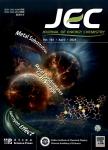版权所有:内蒙古大学图书馆 技术提供:维普资讯• 智图
内蒙古自治区呼和浩特市赛罕区大学西街235号 邮编: 010021

作者机构:Chinese Acad Sci Dalian Inst Chem Phys State Key Lab Catalysis Dalian 116023 Liaoning Peoples R China Beijing Forestry Univ Coll Environm Sci & Engn Beijing 100083 Peoples R China Univ Chinese Acad Sci Beijing 100049 Peoples R China Chinese Acad Sci Inst Met Res Shenyang Natl Lab Mat Sci Shenyang 110016 Liaoning Peoples R China Univ Sci & Technol China Dept Chem Phys Hefei 230026 Anhui Peoples R China Fujian Univ Technol Inst Biol & Chem Fuzhou 350118 Fujian Peoples R China
出 版 物:《JOURNAL OF ENERGY CHEMISTRY》 (J. Energy Chem.)
年 卷 期:2025年第108卷
页 面:47-56页
核心收录:
基 金:National Key R&D Program of China National Natural Science Foundation of China [22208021, 21925803] China Postdoctoral Science Foundation Doctoral Scientific Research Foundation of Liaoning Province Innovation Research Fund Project of Dalian Institute of Chemical Physics CAS Specific Research Assistant Funding Program Fund of the State Key Laboratory of Catalysis in Dalian Institute of Chemical Physics [N-22-08] Youth Innovation Promotion Association CAS Young Top-notch Talents of Liaoning Province [XLYC2203108] 2022YFB4300700 22008230 2020M670807 2022-BS-014 DICP I202224
主 题:Ammonia decomposition Nitridation Interface Heterogeneous catalysis Ru/TiO2
摘 要:The catalytic performance of supported metal catalysts is highly dependent on the interfacial contact between the metal centers and support materials, which could dynamically adapt to the chemical environment in the reactions. Herein, the well-known Ru/TiOx interface of the Ru/TiO2 catalyst is shown to be transformed into Ru/TiOxNy during the NH3 decomposition, which is derived from the nitridation of the support by N* species. Through a series of characterizations and density functional theory (DFT) calculations, it is found that such a nitrogenous interface primarily blocks the cleavage of N-H bonds with a higher energy barrier, leading to the deactivation of Ru/TiO2 in NH3 decomposition. Nevertheless, the Ru/TiOx interface can be easily restored by oxidation and a subsequent H2 reduction, contributing to the recovery of the catalytic activity toward NH3 decomposition. Our study provides a new insight into the deactivation mechanism of Ru/TiO2 in NH3 decomposition and highlights the significance of the dynamic evolution of the metal-support interfaces in the reactions. (c) 2025 Science Press and Dalian Institute of Chemical Physics, Chinese Academy of Sciences. Published by Elsevier B.V. and Science Press. All rights are reserved, including those for text and data mining, AI training, and similar technologies.